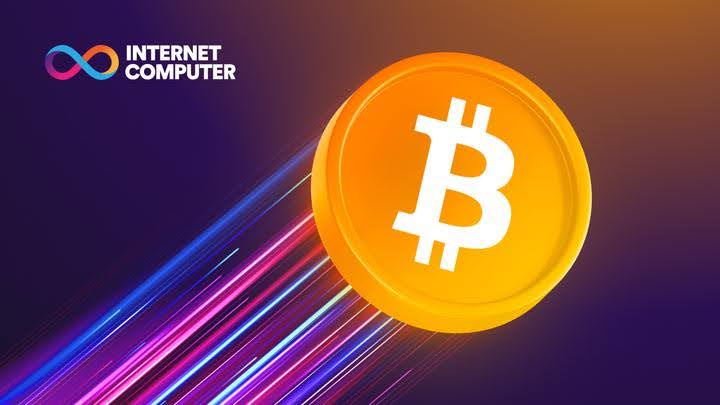ZURICH, August 13th, 2024 – Internet Computer Protocol (ICP), a decentralized blockchain network that extends the functionality of Web3 by overcoming the limitations of traditional blockchains and smart contracts, is delighted to announce that it has successfully integrated the much-awaited threshold-Schnorr signatures and on-chain Bitcoin block headers as part of the Deuterium milestone. These implementations will enable developers to build novel Bitcoin-native use cases that were not possible before.
Bitcoin is undergoing a tectonic shift from its perception as digital gold to becoming the infrastructure powering a decentralized economy. Runes and BRC20 tokens are now generating three times the number of transactions than regular BTC transactions on the network. Over 68 million Ordinals inscriptions with a total fee of $459 million and over 15 million Runes transactions are testaments to the rising builder and user activity in the Bitcoin ecosystem.
However, lack of native support for smart contracts on the Bitcoin network has been a major obstacle for builders. ICP’s Deuterium milestone finally empowers developers to unleash the full potential of the Bitcoin network by allowing for two new key functions:
- Threshold-Schnorr signing: ICP smart contracts can now directly sign Schnorr signatures to etch Runes, inscribe Ordinals in a fully decentralized manner, send and receive BRC-20 tokens directly on Bitcoin L1, sign Taproot transactions, and much more.
- On-chain Bitcoin block headers: Until now, ICP supported only the UTXO set of Bitcoin. The Deuterium milestone extends this Bitcoin integration to give access to the full content of a Bitcoin block which is becoming increasingly relevant as new meta protocols tend to write data to the block header.
Lomesh Dutta, VP of Growth at the DFINITY Foundation, said, “Most Bitcoin meta protocols, like Ordinals and BRC20, use Taproot transactions that rely on Schnorr signatures. With tSchnorr, ICP smart contracts can now natively sign Bitcoin transactions, enabling developers to create a wide range of use cases like etching runes, DeFi lending markets backed by Ordinals, or infrastructure such as decentralized indexers. We’re already seeing a major surge in developers adopting tSchnorr, and we believe this will significantly accelerate development in the Bitcoin ecosystem.”
Here’s how the projects in the ICP ecosystem stand to benefit from the implementation of threshold-Schnorr Signatures and on-chain Bitcoin block headers:
Threshold-Schnorr will become Omnity’s rocket engine, enabling it to handle Bitcoin Taproot assets and connect with blockchains like Solana and Osmosis that use ed25519 signature scheme by the end of August 2024. It will leverage the Bitcoin Canister block header data enabled by the Deuterium milestone to independently verify Bitcoin blocks from public RPC services, ensuring full trustlessness.
Louis Liu, the founder of Omnity Network, said, “Omnity currently employs Chain Key, ECDSA, Bitcoin integration, EVM RPC canisters, and is building a Solana spoke in anticipation of the Deuterium Milestone. We’ve created the first on-chain indexer for Bitcoin meta protocols and will use Bitcoin Canister block header data from the Deuterium Milestone to verify blocks from public RPC services, ensuring trustlessness by removing reliance on these services. We’re also undoubtedly excited to be able to support BRC20.“
Bioniq, which boasts over 50,000 active users, will use threshold-Schnorr signatures for multiple upcoming projects facilitating trustless cross-chain transfer of assets. The first Layer-2 for Bitcoin Ordinals, Bioniq allows for more efficient trading, minting, and showcasing of Bitcoin-based digital art and collectibles with negligible transaction fees and rapid finality.
Bioniq CEO Bob Bodily commented, “Building Bitcoin applications on ICP has been fantastic due to the incredible Bitcoin integration protocol primitives on ICP, like the threshold ECDSA signing subnet and the Bitcoin light node running fully on chain. And now, with the upcoming Deuterium milestone, we get a threshold Schnorr signing subnet too along with block headers in the BTC light node.”
With the introduction of the threshold-Schnorr signatures, Helix users will enjoy the ability to trade their favorite ICP tokens as well as tokens from other ecosystems effortlessly, without the need for bridging or wrapping assets. This enables Helix to now integrate with some of the largest and fastest growing crypto ecosystems in the world, potentially getting access to 10 million active users that trade on Solana and $56 billion monthly trading volume on the network.
The Deuterium milestone also enables Helix to play a part in the growing Bitcoin Layer-2 ecosystem. Runes and Ordinals now valued over $1 billion with a daily trading volume of $2.25 million. It also opens the doors to protocol integrations like Stacks ($4.1bn TVL) or Rootstock.
“With the Threshold Schnorr module on the Internet Computer, we’ve finally cracked the code to seamless cross-chain interactions,” said the Helix Markets Co-founder Gorazd Ocvirk. “Our canisters can now hold and spend Bitcoin and Solana like they’re just another asset in the digital realm. It’s like having a universal translator for blockchains, allowing us to communicate and transact with ease. And the secret key? It’s like a riddle wrapped in an enigma, keeping our digital assets safe and sound.”
The ICP ecosystem projects have successfully demonstrated that it’s possible to securely tap into Bitcoin’s liquidity and user base without relying on bridging or wrapping assets. Developers interested in building applications for Bitcoin can explore open bounties and visit the DFINITY developer forum for more information and guidance.
About the Internet Computer
The Internet Computer Protocol (ICP) is a decentralized cloud 3.0 protocol that allows developers to build and run services and enterprise systems directly on a public blockchain network with unprecedented scalability. Services running on top of ICP are tamper-proof and can natively interact with the outside world in a trustless manner, both with traditional web 2.0 services and with other blockchains. The fast, low-cost, and energy-efficient protocol establishes a new paradigm for how a decentralized network truly operates in web3.
Contact: [email protected]
Disclaimer: The information provided is not trading advice, Bitcoinworld.co.in holds no liability for any investments made based on the information provided on this page. We strongly recommend independent research and/or consultation with a qualified professional before making any investment decisions.



